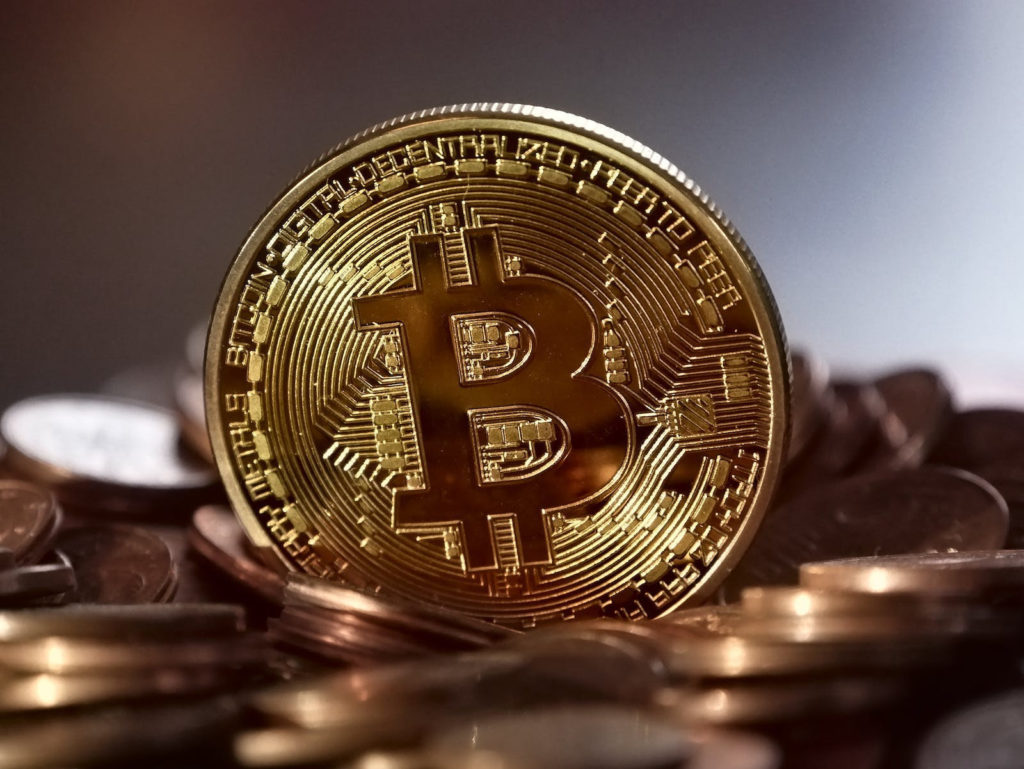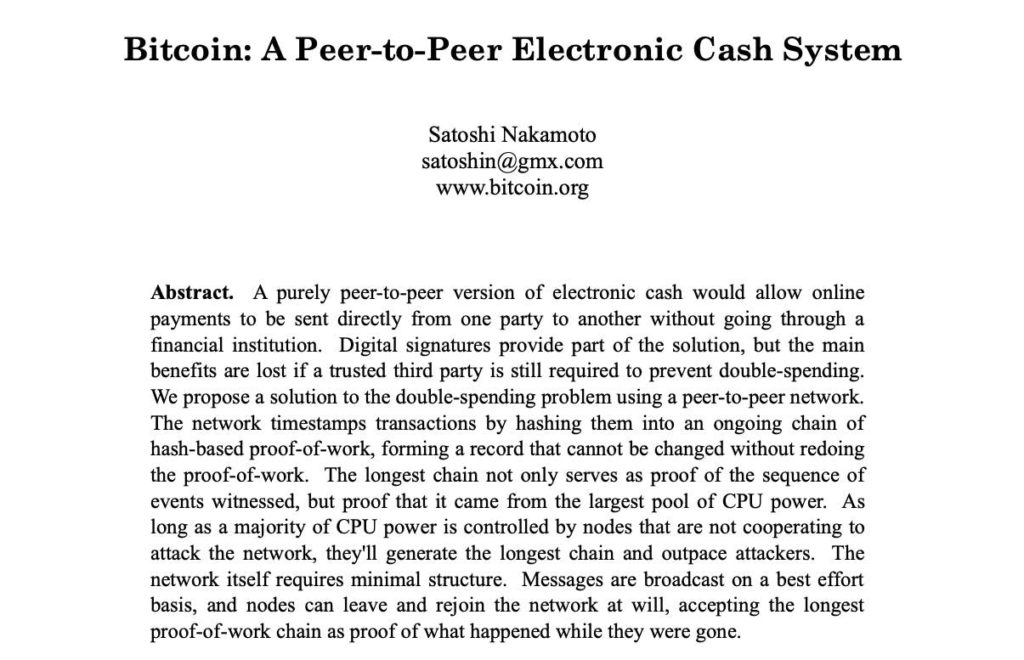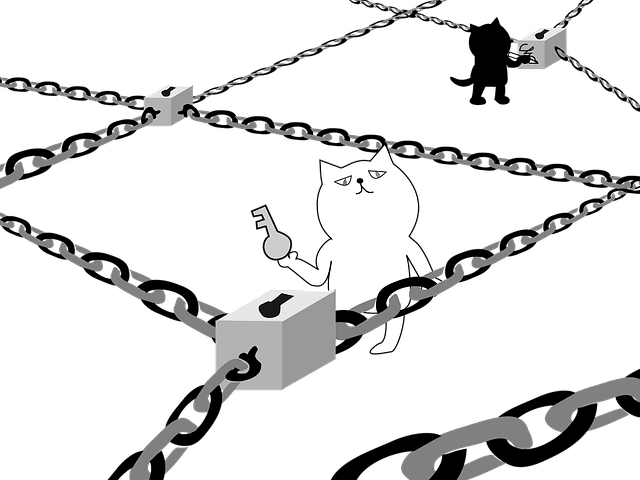What is Bitcoin?


Read Ep. 29 | Show Notes
Subscribe Below to Receive the TKV Newsletter in Your Inbox

In light of the spectacular implosion of FTX (Futures Exchange) and its founder, Sam Bankman-Fried–a vegan philanthropist–I thought I’d devote this week’s newsletter to answering some questions regarding:
- Bitcoin
- Cryptocurrency
- Blockchain
This newsletter is designed to help you understand some of the basics so that you can more confidently form an opinion on all things related to or springing from blockchain, the technology underlying Bitcoin and crypto. I definitely have opinions on many of these things, but won’t be sharing much, if any, of those here.
But before we get into all that, let me give you a brief background on how I know about these things:
Who Am I To Be Talking About This?
Many years before I withdrew from the Firm’s partnership, I started to look into this thing called “Bitcoin.” I was hearing about it on the news, in my favorite podcasts, and on the radio. After a little research, I discovered that Bitcoin was plain difficult for me to wrap my head around.
Was it just PayPal with a funky new name?
Or was it a physical coin that I could order like those newly minted gold-plated dollars that the mustache man liked to peddle on TV?
Could I use Bitcoin to buy groceries, a pair of new shoes, or a flight to Italy?
It seemed everyone around me was talking about buying Bitcoin and, naturally, the ever cumbersome FOMO settled over me. But the notion of purchasing something that I had only the vaguest understanding of rubbed me the wrong way. To be fair, I don’t know very much about the stocks composing my mutual funds, either, but I do know a thing or two about Charles Schwab, the institution that manages those funds, and, more importantly, I trust them to know the things I don’t.
TRUST, it turns out, is the real cornerstone of understanding Bitcoin.
I spent the next several years studying Bitcoin and then blockchain, the technology underlying Bitcoin. Ultimately, I determined that in order to fully appreciate the foundational precepts of crypto, I had to read up on the basics of currency, in general:
- Why does money exist?
- What is money?
- What is value?
- What is “intrinsic value”?
- What goes into transferring value?
It was a hobby, more than anything else, but it inevitably seeped into my practice. By 2020, I was one of the few lawyers in the United States that knew a thing or two about this inscrutable new landscape populated with million dollar jpegs of grumpy monkeys. And I could speak the language in the context of a bankruptcy proceeding. I was not only a member of my Firm’s Blockchain Task Force, I’de written extensively about the topic, spoken at numerous crypto events, and even trained some of the largest Fortune 100 companies on “what is Bitcoin?”
The last matters that I handled before withdrawing from partnership were those related to the largest crypto chapter 11 cases ever filed (at that time) under the US Bankruptcy Code (In re Cred, Inc.). Cred styled itself as a “financial services platform” that essentially “borrowed” your crypto (which they would then invest) in exchange for exorbitant returns. Cred’s hedging strategy proved catastrophically rigid in the face of crypto’s volatility and as a result, bankruptcy soon followed, along with accusations of fraud, conversion, and other hallmarks of financial chicanery.
A Brief Glossary.
Now, before we get into the real nitty gritty, I thought it might be helpful to provide a handful of definitions for some terms you’ll be seeing a lot over the next several paragraphs. The definitions of many, if not all, of these terms remain subject to debate; however, I provide these here simply for purposes of making this newsletter easier to understand. Most of them will not make much sense to you now, but hopefully, by the end of this newsletter, they will serve as a handy little glossary for future reference:
- Cryptocurrency: a digital currency in which transactions are verified and records maintained by a decentralized system using cryptography (i.e., codes), rather than by a centralized authority (like a bank).
- Blockchain: the decentralized and distributed digital ledger (i.e., it’s on the internet) or network on which transactions using many cryptocurrencies (like Bitcoin) are executed and stored. Put another way, blockchain is the technology underlying many popular cryptocurrencies. Think the internet–on steroids.
- Bitcoin: Bitcoin is a cryptocurrency–the first cryptocurrency to be used on a blockchain. It is also the most popular and, at present, valuable cryptocurrency.
- Nodes: the computers that are connected to a blockchain, tasked with verifying and publishing data onto the blockchain. Nodes are compensated for this work, some of which can be referred to as “mining,” through the blockchain’s native cryptocurrency.
- Hashing: the mathematical process that converts an input of data of arbitrary length into an encrypted output of a fixed length (kind of like when a number is too long in a spreadsheet to fit the width of your column you get “#####”). Regardless of the original amount of data or file size involved, its unique “hash” will always be the same size. Moreover, hashes cannot be used to “reverse-engineer” or decode the input from the hashed output–they bear no relationship to the substance of the input data.
As I said, this is not an exhaustive list of definitions related to this topic and there are probably many folks who might have a bone to pick with some of these definitions (for example, there are some who believe that Bitcoin is not a cryptocurrency at all). These are merely meant to facilitate getting through this guide with a little more agility.
I’ve written a lot about this topic and the best compliment I’ve ever received was that my explanation was one of the easiest to understand the reader had ever encountered. Countless individuals have come up to me after a presentation to say, “Ok! Now I’m really starting to get it!” and that makes me so happy. As with all things, I approach training as an opportunity to tell a story because they are not only easier to digest, they are easier to remember.
So, let me tell you a story about Bitcoin.
“Too Big To Fail” = Betrayal Of Trust.

All stories have a beginning, middle, and end. The story of Bitcoin, or, at least this story about Bitcoin, starts in the late 90s.
Prior to the Great Recession (2007-2009), the economy enjoyed nearly two decades of relative stability and growth. It was during this time that the government rolled back some of the existing banking regulation, most notably the Glass Steagall Act. The GSA, among other things, installed the FDIC as a backstop on deposits and provided for the separation between commercial and investment banking. In 1999, the Graham Leech-Bliley Act repealed certain key provisions of the GSA, permitting banks and brokerages to become larger (through consolidation or otherwise).
Consumers continued to:
- Deposit their money with their banks.
- Withdraw their money from their banks.
- Borrow money from their banks.
- Transfer money through their banks.
In so doing, consumers implicitly:
- Trusted that the money they put into their banks would be available at any time for withdrawal or transfer.
- Trusted that the money they received from payors and other transferors would be accurately deposited into their accounts.
- Trusted that the money they transferred to a payee or other transferee would end up with the intended recipient.
- Trusted that the banks were safeguarding the money of their depositors against theft, fraud, and, later, cybersecurity attacks.
- Trusted that the government and relevant regulatory bodies were reinforcing the above.
The catastrophic financial collapse that started in 2007 revealed a financial maw, a deregulated space unfettered with the restrictions of the GSA in which the “Shadow Banking System” was permitted to thrive and banking institutions grew to be “too big to fail.” The federal government expended nearly $500 billion to bail out these “too big to fail” banks and insurance companies, while millions of everyday folks who had fallen prey to the predatory lending practices of the recipients of bail out money lost their homes.
Thus, the Great Recession placed consumers in an unfortunate Catch 22. On the one hand, they no longer wanted to work with the banks that engaged in shady loan practices; but, on the other hand, they wanted to deposit their hard-earned cash with banks that were “purportedly too big to fail.” With the Big Bail Out, the government had already proven itself a guarantor on their deposits. And thus, these banks grew even bigger, giving them leverage against not just smaller banks, but the depositors themselves (e.g., offering lower interest rates for savings accounts).
For some consumers, the trust had been irreparably broken.
Against this backdrop:
Cue Bitcoin.
A Direct Peer-To-Peer Transfer Of Value.

It’s easy to take for granted how many intermediaries stand between buying a bushel of kale or a bag of sunflower seeds. I have a Sunday morning routine. It’s my off day, meaning, I don’t have to run or even workout. Instead, I roll out of bed when I want to and my husband and I drive head over to our favorite local cafe. We split a bagel sandwich and some pancakes, while doing our daily Wordle. Before going back home, though, I visit with the stalls of the local farmer’s market, located in the parking lot. None of the vendors will accept a bag of sunflower seeds in exchange for a bushel of kale. But, they will accept cash, credit card, and Venmo.
- If I want to pay in cash, I need to visit the bank or an ATM to pull out the cash from my checking account. A teller or the ATM would need to verify who I am (via a PIN or my government issued ID), locate my account on their network, verify I have enough funds to honor the withdrawal, and then pull the money out of their till. All of this requires me to trust my bank.
- If I want to pay in credit card, I need to trust that the device the vendor is using will do all the same things a teller would do–verify who I am, locate my account, verify that I have sufficient credit, and then transfer the right amount to the right recipient.
- If I want to pay with Venmo, I need to trust that the application, Venmo, identifies my bank, communicates with the bank to verify my identity, locate my account, verify the amount of funds in that account, transfer the correct amount to the right person, etc. etc.
The above is a terrifically glossed over summary of all the small leaps of faith we must take when consummating the most ordinary transaction–e.g., buying some kale at the market–each of which represents an intermediary standing between me and the person selling me the kale. We have my bank, the vendor’s bank, the manufacturers of the ATM, the software engineers that program Venmo, the various security companies that handle the verification and checks, not to mention the government that regulates the currency (US dollar), as well as the operations of the aforementioned intermediaries themselves to ensure that all of this goes smoothly.
But what if we could live in a world where we didn’t need to rely on any of these people?
On October 31, 2008, Satoshi Nakamoto (a person or group of persons) published a white paper, titled Bitcoin: A Peer-to-Peer Electronic Cash System. The author envisioned a system in which people could transfer value without the need for trust–i.e., without the need for banks. Rather, Satoshi called for a return to the olden days, when I could give you a bushel of kale for a bag of sunflower seeds, without any middlemen to facilitate, record, or enforce the trade. The transaction would be transparent, instantaneous, and therefore, easily ascertainable and recordable and virtually impervious to fraud.
No longer would a depositor need to trust that the money she left with her bank would be there tomorrow.
No longer would a vendor who sold a day’s worth of fruits and vegetables at the farmer’s market need to check to make sure the payments he received on Venmo were accurately reflected on his account and available for withdrawal.
No longer would a credit card holder receive their 10th email in a year notifying them that there was a mysterious cybersecurity “leak” that may render them vulnerable to identify theft.
And no longer would taxpayers be told that their money would be used to prop up the very same institutions that kicked them out of their homes.
With banks removed from the equation, consumers could transact business largely shielded from and without lining the pockets of institutions that were purportedly too big to fail.
Thus, Bitcoin and the blockchain on which it was created, was supposed to be (and basically is) nothing more than a coin that allows you to trade your bushel of kale for their bag of sunflower seeds without the need for banks.
The problem of trust, of course, rests on the problem of being human.
Humans are susceptible to
- Error (“oops, sorry Ms. Jones, I typed in $800 instead of $8,000 when depositing your check!”).
- Coercion (“I had to give the robber all the money–he put a gun to my head!”), and, of course,
- Greed (“no one will notice if I syphon off the top–these funds are FDIC insured, anyway!”).
So, in order to create a system that removes the need for trust, you require a system that removes the need for humans.
Enter:
MATHS.
What Is The Blockchain?
Here is my more technical definition of blockchain:
As defined above, the blockchain is an “incorruptible digital ledger of economic transactions that can be programmed to record not just financial transactions but virtually everything of value.” Digital data is recorded in “blocks,” each of which is assigned a unique “hash.” The hash serves as an identifying “seal” that ensures that the data on the block have not been tampered with. Each block also contains on it the hash of the preceding block, which is what allows for the formation of a “chain.” A key attribute of a blockchain is that the data is shared or “distributed.”
Here is my easier to understand definition of blockchain:
Imagine a HUMONGOUS spreadsheet containing digital data (i.e., data entered through and stored via the internet) that can be entered by anyone who has access to the internet and is duplicated thousands of times and distributed to numerous computers (called “Nodes”) on a vast network. A copy of that spreadsheet is updated every time a single item is changed. The new version of the spreadsheet is redistributed to all those computers—each of which stores its own copy of the same spreadsheet, including every version of that spreadsheet from its creation. Because each Node stores its own copies of every single historical version of the entire spreadsheet, there is no one “central” repository or administrator of the data or “King Node.” Rather, the distributed ledger is “decentralized.”
It’s kind of like Wikipedia, in that anyone who has access to the internet can write anything onto the website. However, unlike Wikipedia:
- There is no central “website administrator” that cleans up, fact checks, or otherwise updates the blockchain.
- Everyone can see every single version of the website that ever existed for all time.
- False data cannot be published onto the website–not because of a website admin, but because of math.
Let’s apply the above to Bitcoin. Think of the Bitcoin blockchain as a very large spreadsheet that contains all Bitcoin transactions. If Company A wishes to transfer to Company B 10 Bitcoins, it will publish its intention to do so in the Bitcoin network. The network of computers will then go to work: they will verify numerous items, including (1) Company A’s identity (by checking the public version of its private key — a unique identifier that serves as a digital “signature”), (2) that Company A has at least 10 Bitcoins, and (3) the identity of Company B.
All of these verifications occur through the following mechanism of incentives:
- The Nodes (remember, all those computers that receive and keep every single version of the massive spreadsheet) are tasked with performing random math problems in order to verify every piece of information necessary to properly transfer Bitcoin from Company A to Company B.
- The Nodes ensure that the transaction is not only properly executed, but that it is recorded onto a “block” (which is sort of like a page out of a ledger). However, no information gets published onto a block unless there is a consensus–i.e., more than half the Nodes on the blockchain agree that the data is truthful.
- The Nodes are incentivized to do this because the first Node to solve the mathematical problem necessary to execute the transaction gets compensated, with–you guessed it–some Bitcoin.
There is no “bank” (i.e., an institution run and operated by a bunch of human beings) that confirms that Company A has enough coins to transfer to Company B, and that the parties to the proposed transaction are who they say they are. Rather, the transaction is completely self-executing and relies on technology for the security that is often times taken for granted when dealing with banks, escrow agents, and other financial institutions that facilitate these transactions — at a cost (e.g., fees, human error and fraud, to name just a few).
Linking It All Together.

It’s at this point when I often hear:
“Uhm…I still don’t get it.”
or
“Ok, I think I’m starting to get it. But not really.”
or
“Sounds like a Ponzi scheme to me!”
So, let’s go back to the problems that Bitcoin is trying to solve. Bitcoin was created to allow people to exchange value (i.e., my kale for your sunflower seeds) without banks:
- How do you verify all the info necessary to execute the transaction without human beings? The Bitcoin blockchain does this by using math–the most infallible, random, and thus objective and non-manipulatable arbiter of truth–coupled with the self sustaining incentive of more Bitcoin (i.e., whichever Node correctly solves the math problem first wins Bitcoin!) to effectively eliminate the need for humans and thus trust. You can’t put a gun to Math’s head, bribe Math with 10 bags of gold, or get Math so drunk it can no longer solve 2+2.
- How do you make sure that a greedy human doesn’t come in and hack the whole system? There are a lot of safeguards in place that make the Bitcoin blockchain virtually unhackable.
- First of all, you have the Nodes that are incentivized to make sure nothing false ever gets published onto the blockchain.
- Second, the blockchain operates on a consensus model, meaning that no data can actually get written onto a block unless the majority of Nodes agree that it is truthful.
- Third, the entire blockchain is visible to anyone at all times. Everyone has access to the entire blockchain from the beginning of time and therefore, to effectively “hack” the blockchain, one would not only need to change the current version, they would need to change all versions in every Node’s possession.
- Fourth, because each block is assigned a “hash” that identifies it in sequential order (e.g., Block B will always be identified in such a way that anyone can tell it comes after Block A and before Block C), if anyone tries to monkey around with the data, the hash will be changed and the “chain” will be broken. For example, let’s say Mr. Fraudster wants to change the info on Block B to say that instead of 10 Bitcoin, he was given 100 Bitcoins. If he changes the data on Block B, the unique hash that was tied to the original data (a transfer of only 10 Bitcoins) will be changed. That new hash will no longer come after Block A and before Block C. The chain will be broken and the Nodes will not allow that data to be published. In this sense, the data already written onto a block are immutable.
- How do you ensure that people’s information remains private? Each person on the Bitcoin blockchain has a “Private Key,” a large, randomly-generated number with hundreds of digits that are usually represented as strings of alphanumeric characters. This Private Key acts as a signature for transactions that allows the Nodes to verify that people are who they say they are. Beyond the Private Keys, there is no other accessible identifying information on the blockchain.
Takeaways.
Now that we’ve covered the fundamentals, let’s go over some broad takeaways:
- The strength of the blockchain is directly related to its length–literally. The longer the chain, the harder it is to break it. Because of the hashes associated with the blocks, in order to change data on a particular block, you would not only need to change the data on that block, but the data residing on all preceding blocks. Thus, the longer the chain (and the more blocks you have to alter), the stronger the security. Because Bitcoin is the first blockchain based coin, it is arguably the most secure blockchain that exists. Not surprisingly, it has never been hacked.
- Nodes need to be properly incentivized to do the work. Hence, you can’t have blockchain (and the security it promises) without cryptocurrency. Remember, the purpose of blockchain and Bitcoin is to provide a universe in which folks can enter transactions without the need for trust. In order to do that, by definition, a blockchain must have security and, therefore, it must have cryptocurrency.
- Conversely, you can’t really have cryptocurrency (as it’s usually defined) without blockchain. Cryptocurrency was supposed to serve as a digital proxy of value that could be exchanged in a decentralized ecosystem and blockchain is the technology underpinning that ecosystem.
Blockchain, itself, doesn’t need to serve as merely a platform for people to exchange value. Theoretically, the virtues of blockchain–the immutability and security–can be leveraged for other applications. For example, blockchain can serve as a tool for:
- Facilitating “first in time” analyses–an immutable and complete record of all transactions can be useful for identifying the owner of trademarks, patents, and deeds, since ownership depends, in part, upon (a) when the property right was asserted, and (b) to whom that right was published.
- Supply chain management–because all transactions on the pure blockchain are visible to everyone at all times, tracing transactional information becomes much easier and cost effective. A good example of this is how Walmart’s Food and Safety department deployed some of the components of blockchain to keep tabs on its organic produce.
- Big Data–blockchain is a potential solution to the effective management and organization of enormous amounts of data related to anything–not just money. Think of the last time you went to a doctor’s appointment and they had your address wrong, even though you’ve updated it multiple times online and even at your last visit. Blockchain technology ensures that once your info has been updated, that it then gets distributed across the blockchain, eliminating the fragmentation that often weighs down Big Data.
Just a reminder–even though blockchain can (and has been) used for a number of other use cases, blockchain does not work without cryptocurrency. In order to erect the robust security features that will facilitate the removal of trust from the equation, Nodes need to be incentivized to verify the proposed transactions.
In Lieu Of Ask Joanne…
This week, in lieu of a traditional “Ask Joanne,” I’ll be answering some frequently asked questions on Bitcoin, blockchain, crypto, and related topics.
But there’s no “there there”…? My partner Geoff always used to say that Bitcoin was just one big pyramid scheme since there’s no “there there.” Unlike gold, many believe that Bitcoin has no “intrinsic value”–value in and of itself. Rather, Bitcoin, like money, serves as a proxy for value. But, with the case of crypto, there is no government backing to support that proxy. So, is Geoff right? Is there no “there there?” Well, Bitcoin derives value in a number of different ways.
First, similar to gold or other precious metals and unlike fiat currency (i.e., government backed currency), it is scarce. There are only 21 million Bitcoins out there (to be held or mined) and that’s it. Sometimes, shrinking supply can create increased demand. But scarcity alone doesn’t necessarily imbue value. As Geoff continues to intone, “there needs to be ‘there’ there!”
Hopefully, by now, based on why Bitcoin was created in the first place–to create a direct peer-to-peer mechanism for exchanging anything of value (back to the kale and sunflower seeds) without having to trust in third party intermediaries whose interests are not always aligned with yours–you can see the utility and thus potential value of Bitcoin.
I know I said I wouldn’t really add my opinion in this article, but here I will say that I think the notion of “intrinsic value” likely needs to be reframed in the context of an ever-expanding digital landscape. What currency is or isn’t, what “precious metal” is or isn’t, may no longer be applicable or even relevant as we continue to move as much inwards (i.e., into the metaverse) as we do outwards (space!). The idea of tying intrinsic value to a lump of metal–something that would arguably be worthless inside the metaverse–is incomplete, if not shortsighted. Moreover, the whole purpose of blockchain is to remove the need for “government backing,” and therefore, again, the current definition of “intrinsic value” may simply be inapposite as it pertains to Bitcoin and other cryptocurrencies.
You say the blockchain is “unhackable,” and yet there are so many examples of hacking and theft of cryptocurrency, including in FTX! Most “hackings” that preceded the theft of cryptocurrency have occurred on [largely unregulated] crypto exchanges (FTX is a crypto exchange). Like stock exchanges, crypto exchanges are platforms that facilitate the easy investment in and trading of various cryptocurrencies. Most of them (including the largest ones) are not on the blockchain themselves. Thus, what’s actually being hacked? Not the blockchain; rather, the exchange on which human beings have placed the cryptocurrencies. These exchanges are established, administered, and operated by human beings (or their proxies). Hence, they are neither decentralized nor unhackable and, in many ways, are even more susceptible to cyber attacks than traditional banks.
Notably, the crypto sitting on an exchange is often not insured (unlike cash deposited with an FDIC insured bank). Moreover, should an exchange file for bankruptcy (e.g, FTX), there’s a very high probability that the crypto in the debtor’s possession will be considered property of the debtor’s estate and NOT property belonging to the crypto “holders.”
So, if you can’t access your Bitcoin via an exchange like FTX or Coinbase, where is the actual Bitcoin? The best and most secure place to store your Bitcoin is on the blockchain itself by using “cold storage.” Cold storage refers to a digital wallet, one that you keep with you (or place in a secure location) and is thus offline. Your digital wallet, when connected to the internet, serves as a portal to the blockchain and, in order to maintain maximum protection against hacking, should be your exclusive gateway to the blockchain. The “key” to access the portal is the passphrase that you are assigned when you first configure your wallet.
What happens if I lose my wallet? Theoretically, your coins aren’t literally stored in your digital wallet. Rather, the digital wallet is merely the interface between yourself and the blockchain. Depending on the kind of wallet you own and how it’s configured, you may be able to access your crypto so long as you remember your passphrase.
What happens if I can’t remember my passphrase or private key? You can’t access the blockchain and withdraw, liquidate, or transfer your crypto without your Private Key. This is the equivalent of throwing all the gold nuggets that you’ve been hoarding into the ocean. They are, for all intents and purposes, completely useless to you.
What does “mining” cryptocurrency mean? When I think of the Nodes “mining” Bitcoin, I literally picture rosy-cheeked little gnomes with droopy hats and bulbous noses excavating for small, shiny coins embossed with a letter “B.” But “mining” is far more tedious than that. It merely refers to the Nodes that are expending their computer powers to solve as many mathematical problems as quickly and accurately as possible so they can be rewarded with Bitcoin (or applicable cryptocurrency).
Aren’t their other crypto coins, like Ethereum and Dogecoin? Yes, there are definitely other cryptocurrencies out there. As of March 2022, there were more than 18,000 “cryptocurrencies,” but, notably, none of them were created on the Bitcoin blockchain. Bitcoin is the only digital coin that was created on the Bitcoin blockchain. Ethereum was created on the Ethereum blockchain, a digital network that operates under an entirely different protocol than the Bitcoin blockchain. Dogecoin was actually created via a “fork” off the Bitcoin blockchain, which means that some of the coding for Dogecoin’s protocol is based, indirectly, off the Bitcoin blockchain.
Aren’t there major environmental issues associated with crypto? In order to solve the massively hard math problems necessary to reinforce the security of the blockchain, Nodes expend enormous amounts of energy. And, as the Bitcoin blockchain in particular continues to grow, the sheer weight of the chain also requires energy to maintain. In 2021 alone, each Bitcoin resulted in $11,314 in climate damages, on average, with total global damages of all coins mined in 2021 exceeding $3.7 billion. It is estimated that from 2016 to 2021, the average climate damage to coin market price (i.e., the ratio of climate damage (in $$s) to the market price of the coin (in $$s)) was 35%. Put in context, however, this is less than the climate cost of coal, natural gas, and gasoline and is roughly equivalent to that of producing beef.
What are NFTs? “NFT” stands for “non-fungible token,” and like Bitcoin, is a “proxy” for something else. In the most popular use case, the token is meant to represent artwork. I think many people confuse the NFT as the artwork itself, but it is a token that symbolizes the non-fungible value (e.g., art).
The confusion arises because, once again, many folks don’t know what problem NFTs are trying to solve. We know now that Bitcoin was created to solve the problem of trust. But in what scenario would anyone want something that represents the art, when they could just have the art itself? Can you think of a world in which you don’t have actual houses with actual walls with actual artwork on them, but representations of the same? Where you don’t even have an actual body but an avatar?
For those who’ve grown up with Fortnite, the answer is obvious:
Video games.
But (a) expand NFTs to include not just artwork but any old thing that requires some type of graphic representation (like the sweater your avatar wears or the nail polish it prefers), and (b) think beyond video games to virtual universes or the “metaverse.”
The End Of Bitcoin…?
So, has FTX spelled the end of Bitcoin?
I like to think of Bitcoin as a modern day Robin Hood. Satoshi’s white paper, however sterile and technical, remains a powerful rebuke of a system that leveraged an unconscionable power imbalance between Goliaths that were “too big to fail” and everyday people, like my mom and dad, who were just trying to make ends meet, in order to maintain the status quo. Are there problems with how blockchain has been deployed by criminals and other fraudsters? Absolutely. Should we be concerned with the amount of climate damage the Bitcoin blockchain (and other blockchains) are causing with every single transaction? Absolutely. But, the creators of Bitcoin never claimed that the blockchain was a perfect solution, merely a potential one, just as Robin Hood probably wished he didn’t have to resort to theft in order to more evenly distribute the country’s wealth.
Based upon what little I know of Sam Bankman-Fried, it’s possible he believed in Bitcoin’s potential as as tool for justice, as well. He may have also seen what I do–that as climate change bears down on us, there will be a need to expand inward as much as outward. There are only so many places left unexcavated on this planet of ours, and perhaps the answer isn’t a colony on Mars, but a universe inside our consciousness. I know, I know–to many of you, that may sound farfetched and, quite frankly, horrifying. Maybe you’re saying what I keep saying: “Hopefully, I’ll be dead by then?” But for people of the former FTX CEO’s vintage (and for those of you who have children), the metaverse isn’t an “if” but a “when.” And although his stake in the virtual ground has been upturned and will likely be tossed aside, there are many others who are waiting in the Web3 wings to take his place.
Because of that, I don’t think that Bitcoin is at an end. Rather, I think we are all still very much in the throes of Bitcoin’s explosive beginning.


Updates/Random Things.
- What I’m Watching: Anthony and I have run out of episodes of The Vow and thus started another docuseries called FIFA Uncovered. I know next to nothing about FIFA (I actually thought it was called “FIFO” which Anthony thought was hilarious), but I have very fond memories of watching the World Cup in 2002 at 3 in the morning with my entire family because the games were hosted in South Korea. The series covers the organization’s rise and fall into corruption through footage and interviews with former officers and other insiders. We’ve only gotten through 3 episodes thus far, but I definitely can’t wait for more!
- What I’m Listening To: In case you missed it, I had a really fun chat with Quinn Emmett, on the Important, Not Important podcast. You can listen to it here!
- What I’m Cooking: This past week, I posted two recipes that are PERFECT for the holidays: (a) Gluten free snickerdoodles and (b) Braised tofu with a red wine demi glace! Both are SO good and definitely worth including on your holiday dining table.
Parting Thoughts.
I once read a tweet in which a vegan claimed he was indisputably a “better person” than everyone who ate meat because of his ethical choice to avoid consuming animal products. At the time, it resonated with me. I was a newly minted vegan and I liked to believe that the current version of myself was “better” than the previous, meat-eating one. It didn’t take long, however, for me to grow irritated with so-called morally superior vegans who also happened to be racist, abusive, or, in other ways, totally morally bankrupt. Not only do they give vegans a bad rap, in general, but the arrogance embodied in their stance just makes effective advocacy that much harder.
The fact that FTX’s CEO is vegan doesn’t only prove to me that veganism does not automatically shield you from moral scrutiny or make you “better” than the person who grates some parmesan over their pasta, it demonstrates that this type of evaluation altogether (i.e., “Am I better than other people?”) is largely irrelevant. Maybe you are, maybe you aren’t, but who cares?
More importantly, we often lack the information necessary to make an informed judgment on such a question. The person running next to you may have started running long before you. Their finish line might come long after yours. They might be running with injuries or even with missing toes. They may be going through work stress or a divorce or tending to a loved one with cancer. There’s so much more than meets the Instagram feed, and judging someone based on limited information, at best, is a fool’s errand–vegan or not!
While figuring out whether you’re faster than others can be important if you’re trying to win a race, there’s really no such thing as being the “best” at life. Indeed, instead of trying to “live your best life,” why not invest in “living your best self“? Because here’s the thing: you win at life not because you have more money than others, more children than others, or more “morality points” than others.
You win at life when the person crossing the finish line is someone you’re proud of, someone who’s better than the person who toed the start line.
– Joanne





